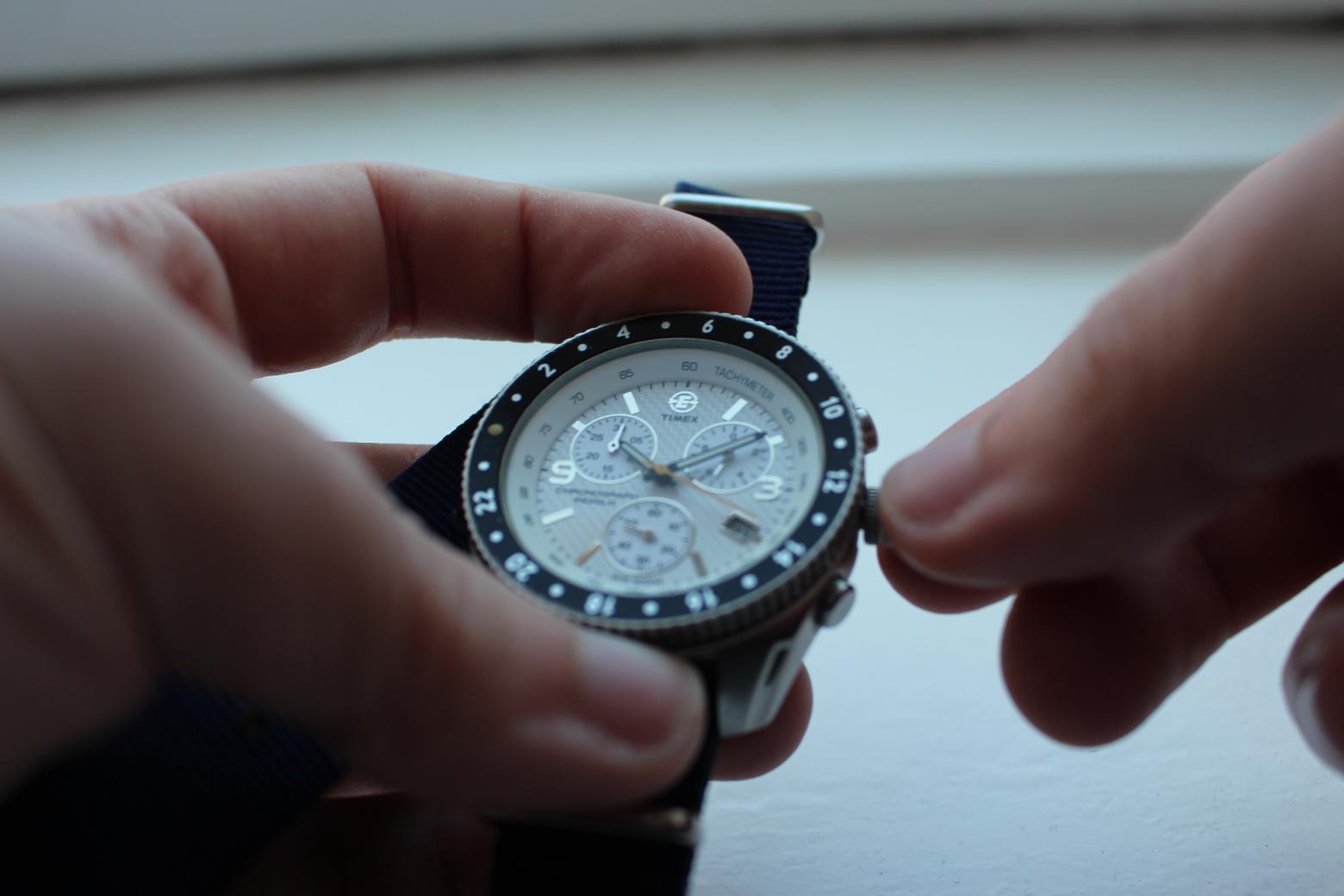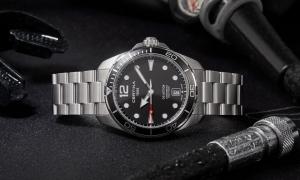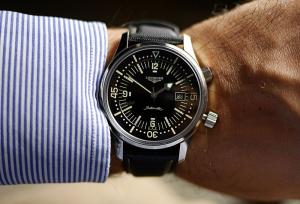How to Use a Watch Bezel: A Complete Guide

As a casual watch wearer, you might have been browsing through some online watch listings and come across the term “bezel” and wondered what it meant. Basically, a bezel is a part of the watch. For simple, time-only watches, the bezel is usually plain. For complicated watches, they can have a cool function, too.
In this article, we’ll elaborate more about the watch bezel — what it means and how to use each type.
What is a Watch Bezel?
Before we get into the details of each watch type and how to use them, let’s first get the definitions out of the way. So what is a watch bezel? Well, to put it simply, it is the rim surrounding the watch crystal which frames the dial. Traditionally, the watch bezel is made of metal but it could also be made from different materials such as ceramic. It is also usually secured down, but there are bezels that are removable to allow people to change it up a bit from time to time.
A lot of the time, the bezel is simple. It could be plain or have a few decorative pieces such as studs or screws. But sometimes, what you see on the bezel isn’t just for decoration. There are lots of watch bezels that serve a function.
Types of Watch Bezel
You might not realise it, but there are actually quite a lot of types of watch bezels. For this article, we’ll be showing you eleven different types of bezels.

1. Plain/Decorative Bezel
Let’s start with the basic one which is the plain bezel. This perhaps is the most common bezel you can find on watches. A plain bezel is one that is fixed and does not hold any additional function. The plain bezel could be completely plain with just the standard metal. It could also have a colour or other designs such as studs, engravings, jewels, and more. The main point is that this type of bezel is only decorative and does not have any other features.

2. Count-Up Bezel (Dive Bezel)
Our first watch bezel with a particular function is the count-up bezel. This bezel is commonly used for dive watches. The scale is from 0 to 60 to indicate the minutes of elapsed time. When in the reference position, the scale on the bezel is aligned with the minute markers on the watch. The count-up bezel can only be turned counter-clockwise. This is so that in cases where the bezel is accidentally adjusted while diving, the remaining time will only be lessened. This is a safety feature to ensure that in case the bezel is accidentally moved, you’ll end up with more air in the tank than less.
-
How to use the count-up bezel:
Divers mainly use this watch bezel to measure the elapsed time when they are in the sea. Setting this up is really easy. You just rotate the bezel until the zero position, which is usually represented by an arrow, is aligned with the minute hand. You will be able to identify the elapsed time by locating the minute hand. The number on the bezel that the minute hand is pointing to indicates the number of minutes that have elapsed since you set the bezel.

3. Countdown Bezel
From the name itself, you can probably guess the function of this watch bezel. Similar to the count-up bezel, the countdown bezel also has marks from 0 to 60. The difference is that for the countdown bezel, it’ll be counting down starting from 60 to zero. Also, unlike the count-up bezel, you can rotate the countdown bezel in either direction. Because of its function, runners and other types of racers are usually the ones who use this bezel.
-
How to use the countdown bezel:
If the count-up bezel measures the elapsed time, the countdown bezel determines the remaining time. To use it, you must rotate the bezel and align the bezel’s zero position with the targeted time. The number that the minute hand will be pointing to will tell you how many minutes you have left.

4. Tachymeter Bezel
The tachymeter is perhaps the most common watch bezel when it comes to motorsports. It is a fixed bezel. This means that the bezel cannot be rotated, unlike the count-up and countdown bezels. The tachymeter scale starts from around 4000-1000 units and ends at 60 units at the 12 o’clock position when reading in a clockwise movement. People often use this bezel to measure time, speed, or distance.
-
How to use the tachymeter bezel:
For measuring speed using the tachymeter bezel, you must first ensure that the distance travelled is one single unit. This could mean that you are determining the time an object spends travelling a distance of either 1 mile or 1km. In this case, you’ll need to start the chronograph when the object leaves the starting position and stop the chronograph when it reaches the end position. Locate where on the tachymeter scale your chronograph second hand has landed. This number is your speed in units per hour.

5. Pulsometer Bezel
The pulsometer bezel is quite a rare find these days. But back in the 1920s, doctors and nurses would use this watch bezel to determine a patient’s heart rate. Watches with this bezel were quite expensive. And with the medical technology that has been released since then, it’s no wonder why pulsometer bezels aren’t quite as in demand.
-
How to use a pulsometer bezel:
The pulsometer meter has a scale starting from 200 moving down to 40 when you read it clockwise. This scale is usually graduated for 15 to 30 pulsations. Once they start the chronograph, health professionals would count the patient’s heartbeats until they reach the number that the pulsation scale is rated (15 or 30). The number that the second hand would land on would be the beats per minute heart rate.

6. Telemeter Bezel
Here’s another watch bezel that is quite uncommon. Telemeter bezels would be most useful for the military. This bezel measures the estimated distance between you and an event that is both seen and heard. In the military, you could use this to measure the distance between you and an enemy based on when you see their gunfire and when you hear it. You could also use this to estimate the distance of a lightning strike.
-
How to use a telemeter bezel:
Start the chronograph once you see the event. For example, you see a lightning strike and press the chronograph to start. Once you hear the thunder, stop the chronograph. The second hand would be pointing at the approximate distance between you and where the lightning struck.

7. Compass Bezel
From the name itself, you can probably guess what this watch bezel does. The compass bezel is marked with the four directions and often the degrees in between. Now, you are already able to determine where north is if you have a normal watch. However, the compass bezel makes it easier since you can rotate it to mark where the north is so you won’t forget. This bezel is particularly useful for hikers and climbers. It must be noted, though, that this is not a magnetic compass so you will only be able to use it for this purpose as long as the sun is up and visible.
-
How to use a compass bezel:
First, you have to lay your watch horizontally. Align the watch’s hour hand with the direction of the sun. Find the midpoint of the hour hand and the dial’s 12 o’clock position. This midpoint indicates the approximation of the south. Then, rotate the bezel so that the S will align with your approximated south.

8. GMT Bezel (World Time Bezel)
The GMT Bezel is perfect for the international traveller. GMT stands for Greenwich Mean Time and is often used for time zones. The GMT bezel has 24-hour markings around it and on the dial is a GMT hand.
-
How to use a GMT bezel:
First, let’s establish that the time that’s displayed currently on the dial reflects the time in your current location. For example, you are currently abroad and have set your watch’s time to the time of the country you are in. To know the time in your home country, you should identify the time difference. If your home country is ahead of your local time, rotate the bezel to the left. But if it is behind, rotate to the right. Each rotation click represents one hour behind or ahead. For example, if the time at home is four hours ahead of your local time, you should rotate the bezel four clicks to the left. With the GMT bezel adjusted to the second timezone, the GMT hand will now be pointing at the time of that timezone.
9. Decimal Bezel (Decimeter Bezel)
The Decimeter or Decimal Bezel is a helpful tool for those in the scientific field. This watch bezel simply presents the time in its decimal form. Scientists conducting experiments or industrial engineers conducting time studies often measure time in decimals for easier computation. So, this bezel would make the job a lot easier.
-
How to use a decimal bezel:
The decimal bezel is pretty easy to use. You just need to use the chronograph like you usually would. When you stop the chronograph, the value on the bezel that your chronograph second hand is pointing to will be your elapsed time. For example, if the second hand is at the 3 o’clock position, that will be 25 on your bezel. This indicates a time of 0.25 minutes since 15 seconds is 25% of a minute.

10. Slide Rule Bezel
The slide rule bezel is quite a complicated watch bezel. And that’s because it has many functions. Back in the 1950s, pilots would use this to compute all sorts of things from flight time to fuel consumption. Believe it or not, this particular watch bezel can help a pilot do conversions and mathematical operations.
-
How to use a slide rule bezel:
Since this is quite a complicated bezel, we will only be presenting an oversimplified guide on how to use it. For conversions, look at the interior stationary dial. Locate the unit you’d like to convert. For example, you’re converting kilometres to nautical miles. On the rotating part of the bezel, locate the amount you are trying to convert. Align this amount to its unit. In this case, align it to the kilometres. Now look at the nautical miles and the value it is aligned with is your conversion.

11. Yacht-Timer Bezel
The last watch bezel we’ll be discussing is one that is used for regatta racing or yachting. The yacht-timer bezel basically works as a countdown timer with a scale counting from 10 to 1.
-
How to use a yacht-timer bezel:
Racing on the water is very different from racing on the ground. You can’t just simply stay put behind the starting line. There are certain factors such as the wind and the fact that the engine is already started which makes it not as easy. Plus, there is a penalty if a yacht goes over the starting line before the race starts. So, the crew would often use the yacht-timer. Once the horn that signals the start of the countdown is blown, the crew starts the timer on the bezel.
Final Thoughts
Before buying a watch, you should realise that the cool markings on the bezel aren’t just for decoration. They serve a specific purpose. You should also know what type of bezel you have so you’ll know how to use it. Sometimes, people would purchase watches with a bezel and not really let the bezel live to its full potential. And that is a shame since a lot of work is put into creating that bezel.
Recognize whether your watch’s bezel is functional or purely decorative. And if it is indeed a real functional bezel, make sure to correctly identify which type of watch bezel you have. There’s so much more that a watch can offer aside from simply telling the time.
After reading about all the different types of bezels, we hope that you’ve become more curious and interested in the matter. But if you’re not really into these types of things, then we assure you that a plain bezel is just enough if your priority is having a watch that does what it does best — telling the time.
You may also be interested in knowing all about the tachymeter bezel. If so, check out our feature on how a tachymeter works here.


